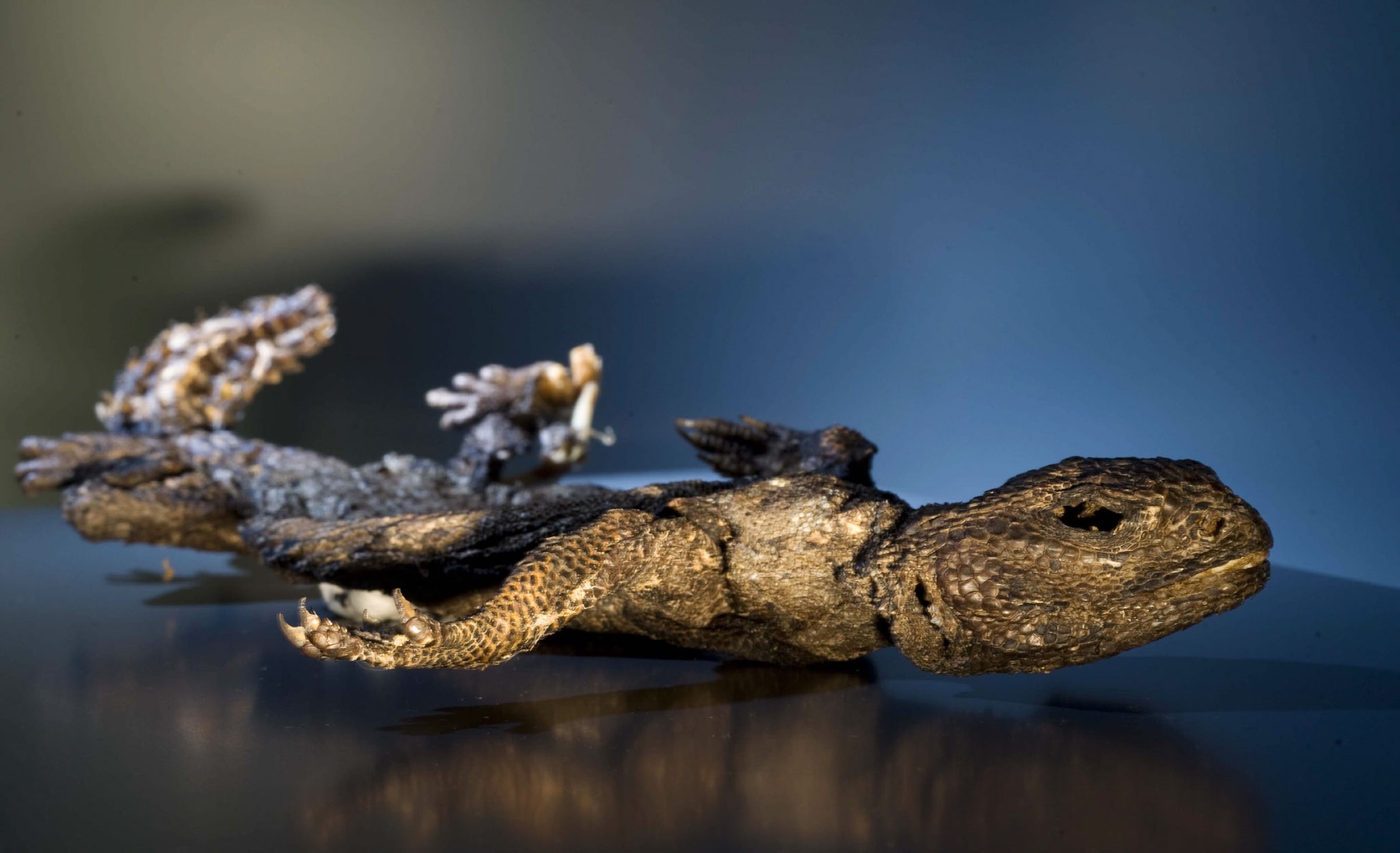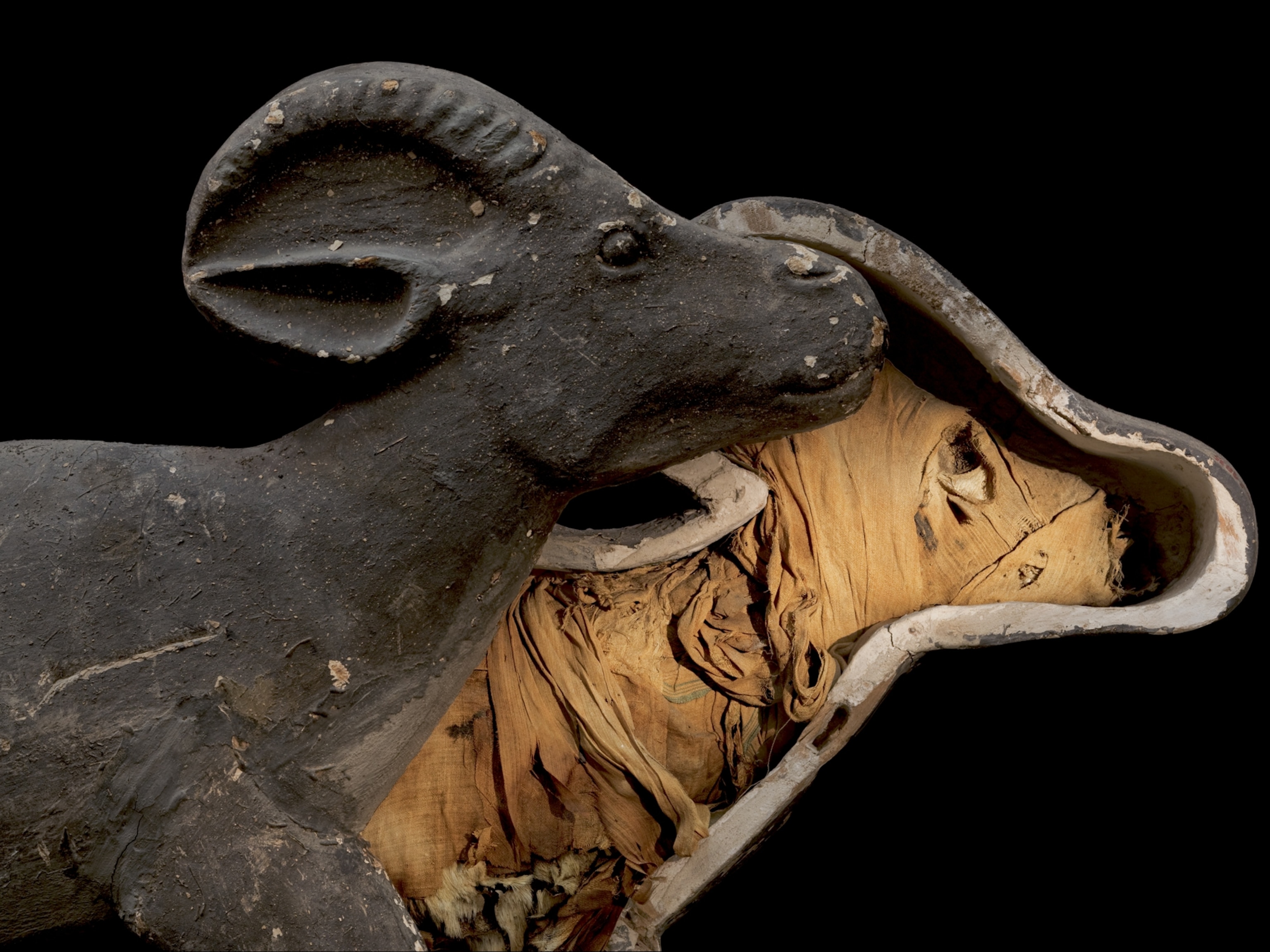
5 Facts About the Surprisingly Wide World of Animal Mummies
For starters, most mummies are accidental, naturally preserved by lack of oxygen, or, in some cases, bat poop.
Usually when we tell an animal "Stay!" we don't mean for a thousand years.
We're glad it happens, though, because animal mummies have a lot to teach us.
From ancient Egypt or the bogs of Europe, there are many examples of creatures—including dogs, baboons, and more—that have been preserved over the millennia. (Read about animal mummies in National Geographic magazine.)
Mummies of the World: The Exhibition, which recently opened at the Orlando Science Center, has several of these historic treasures on display. For Saturday's Weird Animal Question of the Week, I went to find out what animal mummies can tell us from beyond the grave.
Accidental Mummies
The glamorous gold-entombed, carefully wrapped bodies most of us associate with mummies aren't actually the mummy majority.
Naturally occurring mummies are much more common than prepared ones, says Heather Gill-Frerking, scientific research curator for Mummies of the World.
Lack of oxygen, dry air, and extreme heat or cold can mummify an animal or a human. Take "bog bodies," which have been remarkably well preserved due to the acidic, oxygen-poor conditions of peat bogs. (Related: "Who Were the Ancient Bog Mummies? Surprising New Clues.")
Such animals can also inform modern science. For example, the mummy exhibit's alpine glacier hare was found at a much higher elevation than it lives today, which may lead biologists to rethink the species' historic range.

Cultural Clues
The famous animal mummies of Egypt served many functions, including representing deities. The millions of dog mummies buried in Egypt's Dog Catacombs, for instance, are dedicated to Anubis, the jackal-headed god of the afterlife. (Related: "Pictures: Millions of Puppy Mummies in Egypt Labyrinth.")
These mummies can offer clues to Egyptian cultural practices, Sandra Wheeler, an anthropologist at the University of Central Florida, says via email.
Scientists have unearthed baboon mummies with well-healed broken legs or arms, which suggests the animals may have been held captive in ancient Egypt. (See an interactive map of Egypt's animal mummies.)
This means "there was a market large enough to warrant raising animals for this purpose," she says. (For an in-depth look at Egypt's animal mummies, also see National Geographic explorer Salima Ikram's Animal Mummy Project.)
Understanding Mummification
Experimental animal mummies also help scientists uncover the natural mummification process. MUMAB, a modern experimental human mummy, is on display at the Orlando museum.
Gill-Frerking has also buried pig bodies in peat bogs to investigate how bog mummies develop.
After only six months, the bog had demineralized the bones enough to turn them rubbery. After two-and-a-half years, the pigs were "still beautiful," and looked much as they had while alive, she said.
The scientist also got a surprise: Due to the gases produced by the decomposing body, "I touched one to excavate it and it exploded all over my hands."
How to Get Ahead in Mummy Studies
The Jivaro-Shuar tribe of Peru and Ecuador practiced another form of mummification: They would make shrunken heads of enemies killed in battle, a practice that has since been banned in those communities.

Head-shrinking involved removing the skin and soaking it in hot juices containing natural tannins. Once dried, the skin was repeatedly filled with hot sand and pebbles, and the outside was treated with plant oils. The whole process could take six days. (See video: "How to Shrink a Human Head.")
One of the mummy exhibits explains how they taught mummification skills to their children. Boys first learned to hunt sloths, then shrunk sloth heads as practice for the real thing, Gill-Frerking says.
The exhibit's shrunken sloth head is startlingly well preserved, down to its lifelike fur.
Poop Preservative
Sometimes one animal helps to unwittingly mummify another.
In Nevada's Lovelock Cave, for example, bat guano—or feces—has mummified numerous birds and three humans, according to the book The Scientific Study of Mummies.
Gill-Frerking says bodies mummified by guano may stay intact due to the lack of oxygen, once they were "sealed in" by the bat guano. (See National Geographic pictures of animal mummies.)
Move over, Botox. There's a new preservative in town.
Weird Animal Question of the Week answers your questions every Saturday. If you have a question about the weird and wild animal world, tweet me, leave me a note or photo in the comments below, or find me on Facebook.





